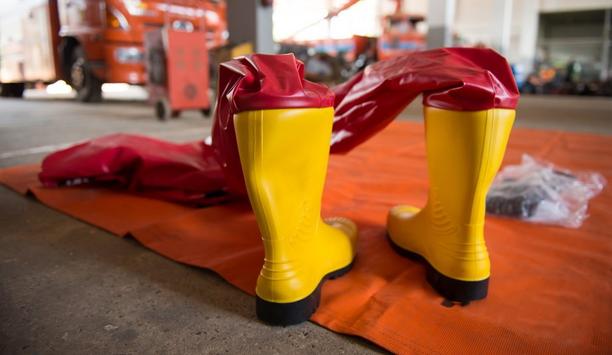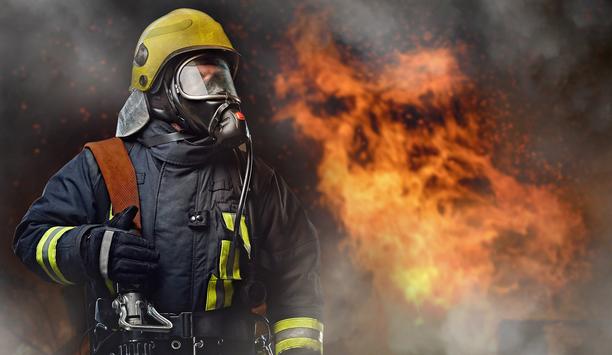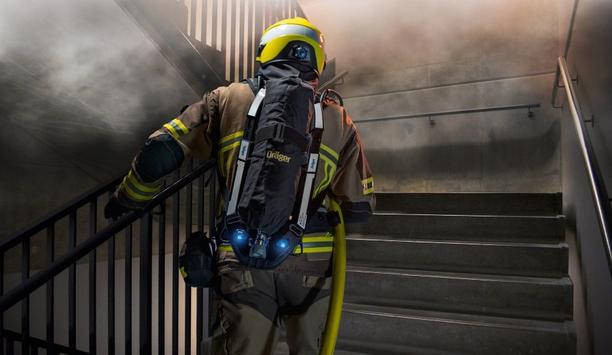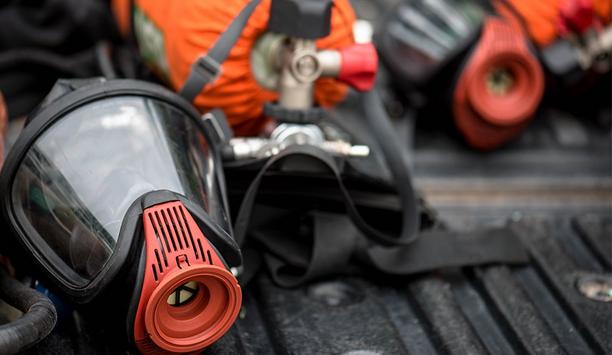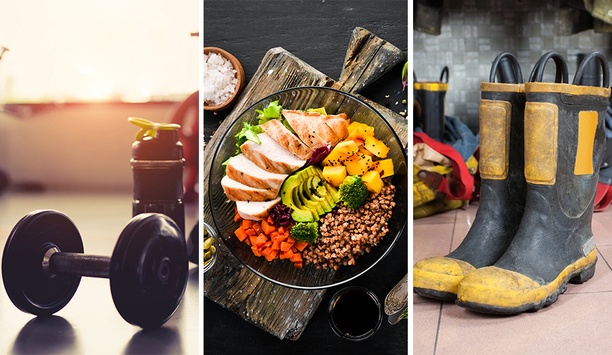Popular with fire-fighters around the world, XFlex is Bristol Uniforms’ flagship range in structural fire fighting (Personal Protective Equipment) PPE. Its name came from the ‘X’ shape formed by the curved seams on the garment’s elbow and its flexibility. It enables excellent range of movement which helps fire-fighters carry out their physical roles more effectively. The creation and introduction of XFlex into the market marks a new direction in fire fighting PPE design and application.
Ergonomic and comfortable PPE
Historically, (Personal Protective Equipment) PPE was made of heavy protective materials which could be hot and cumbersome to wear, hindering performance and increasing the risk of heat stress. Fire-fighters needed and wanted lightweight, breathable garments with improved flexibility and manoeuvrability, so they could carry out physical tasks more effectively.
Bristol Uniforms started to look at ways of making fire-fighting PPE more ergonomic and comfortable
With this in mind, Bristol Uniforms started to look at ways of making fire-fighting PPE more ergonomic and comfortable. In particular, they looked at what was happening in other industries where flexibility and manoeuvrability were key elements. They studied the latest designs and state-of-the-art fabrics being used to allow freedom of movement and breathability and applied these principles to their PPE designs.
Computer Aided Design (CAD) software
Drawing on this research, Bristol Uniform’s specialist technical designers developed new product designs using the very latest Computer Aided Design (CAD) software. Various designs were put forward, which differed in construction, fabrics, shape and look. Each design was assessed, and the preferred design refined.
During the process, the company also undertook ‘indicative testing’, which is independent testing of selected fabric layers to ensure they work effectively and meet the required standards.
XFlex structural fire fighting PPE
The resulting XFlex structural coat and trouser ensemble is particularly ergonomic, featuring distinctive sports styling. It was the first to feature a ‘spiral cut’ design. This means that none of the seams of the garment are straight, but instead follow the body’s curves and contours, there by allowing much more movement and flexibility.
The XFlex design also features shoulder shaping and under arm gussets, which allow full rotational arm movement, and ergonomic three-dimensional articulated elbows and knees.
Special fabric for enhanced fire resistance
XFlex features a select combination of fabrics offering resistance to fire, increased breathability and moisture control
XFlex features a select combination of fabrics offering resistance to fire, increased breathability, control of moisture, and a lighter weight – all of which maximise comfort and help to reduce the occurrence of heat stress.
Customers can choose from a selection of fabrics for the outer shell, which also come in a number of colour options - Hainsworth TITAN1260 fabric is available in gold, Hainsworth TITAN1250 in Paris navy, and a range of Hainsworth TITAN1220 fabric colours are available including blue, red, grey and tan.
WL Gore moisture barrier and liner systems
XFlex also comes with a choice of inner moisture barrier and liner systems from WL Gore, which serves to draw sweat and moisture away from the skin, helping to keep the body cool and dry. Recently, Bristol Uniforms introduced the ground-breaking Gore Parallon System as a new option for XFlex – a particularly light-weight solution that offers unprecedented levels of breathability and thermal protection, particularly when wet, helping to prevent dangerous increases in core body temperature.
When developing XFlex, Bristol Uniforms also took the decision to provide an extensive range of sizes, including a total of 28 male and female sizes available as standard. They also provide a comprehensive sizing procedure and have the capability to send specialist teams to undertake all measuring to ensure it is carried out correctly if necessary. Finally, XFlex has received accreditations from all three international standards-setting bodies - the European Standard of Certification (CEN), the International Standards Organisation (ISO), and the National Fire Protection Association (NFPA).


